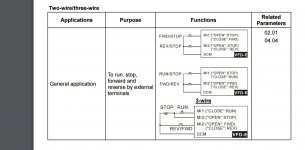JC
Coos Cues
Since there has been a lot of lathe discussion lately this seems timely.
Wondering what you guys think of this thing? Don't see a model number so don't know it's age or country of origin. Seems like it's not such a beast like the new grizzlys and may be well suited for cue building. I don't have 3 phase and like the VFD idea. Maybe the price is too high?
Thanks
https://medford.craigslist.org/tls/5996528381.html
JC
Wondering what you guys think of this thing? Don't see a model number so don't know it's age or country of origin. Seems like it's not such a beast like the new grizzlys and may be well suited for cue building. I don't have 3 phase and like the VFD idea. Maybe the price is too high?
Thanks
https://medford.craigslist.org/tls/5996528381.html
JC
